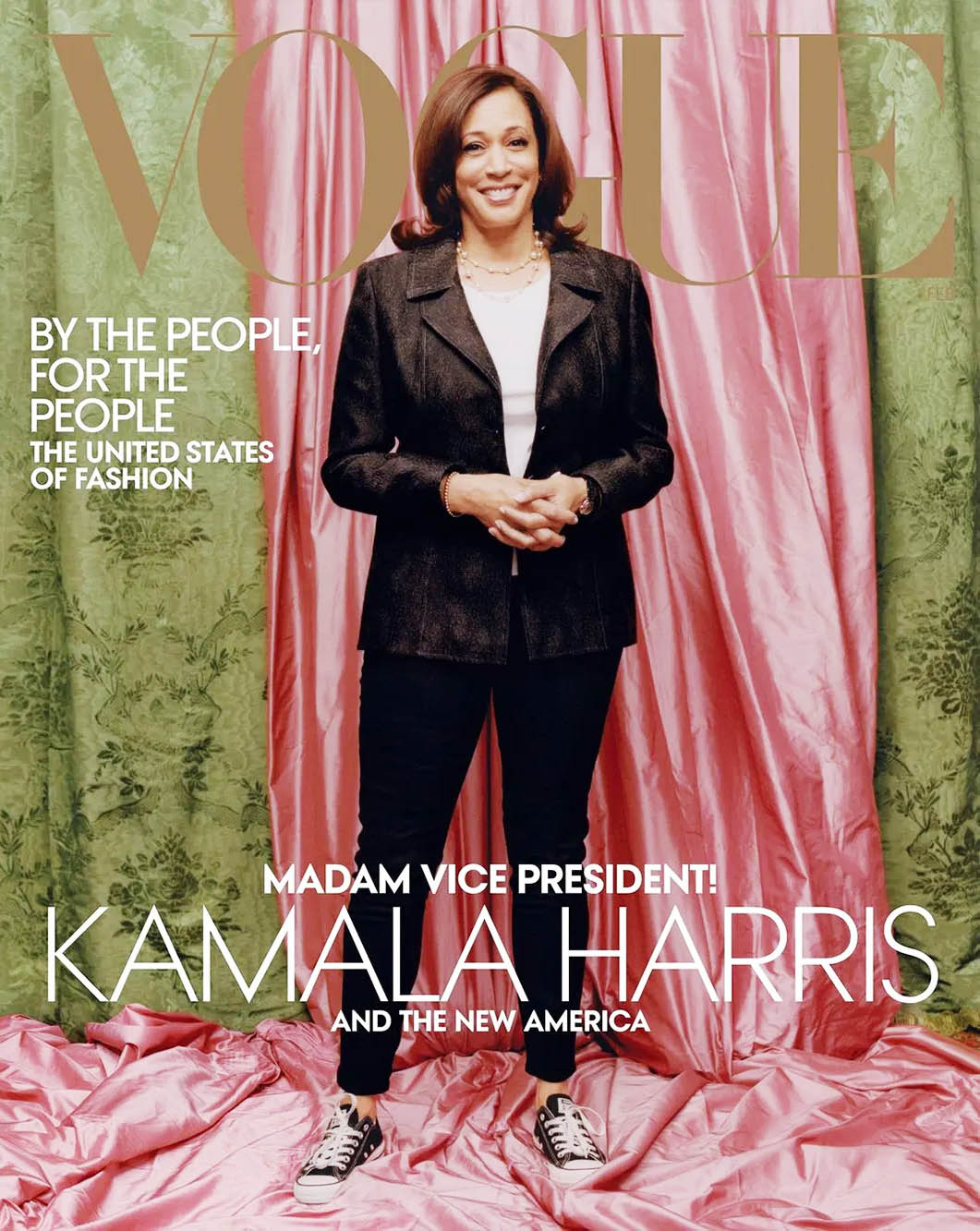
American Vogue, whose editor in chief is Anna Wintour, featured the VP in her signature looks posed behind the laziest backdrop set I have seen in my life. It honestly looked like a five-year-old had a hand in the draping of the cloth. The lighting was poor, the choice of her sorority colours for a backdrop seemed like a half-hearted, creative attempt to add context to person she is and while the image on its own isn’t bad it somehow didn’t manage to capture the powerhouse image that I have in my mind for her.
Some say that perhaps the whole concept of the photoshoot was to make her appeal as more of an in-touch-with-reality type of person given the backdrop of America’s polarizing politics and the pandemic. While this may seem like a fair point, no one expects American Vogue to be read by people who want to be 100 percent in touch with reality.
Fashion for many is a form of escapism and particularly with the VP the styling and imagery of the shoot could have projected an image of hope and optimism. The magazine could have given us something new, Kamala in a way we have not seen her before. Intimate, up-close and personal.
By now most people already know her for favouring Converse, her statement pearls and her slick pants suits. Therefore it goes without saying the accessible, career woman image has already been hammered many times over.
With outrage mounting and the magazine deciding to re-shoot the cover, this is just a gentle reminder why we need to move away from only considering inclusivity when there is a first. Would they have gotten the lighting, styling and concept better if they were used to projecting women of colour in power wielding poses? I would be inclined to think so. Would they be more aware of the reception if more people of colour actually worked on shoots like these? Possibly. Sadly, this is just another reminder of how white supremacy forces you to conform, so they get to control the narratives of what is and isn’t deemed acceptable for you. Handing out carrots intermittently to remain relevant but still hardly ever making any concrete impact to really include everyone.






